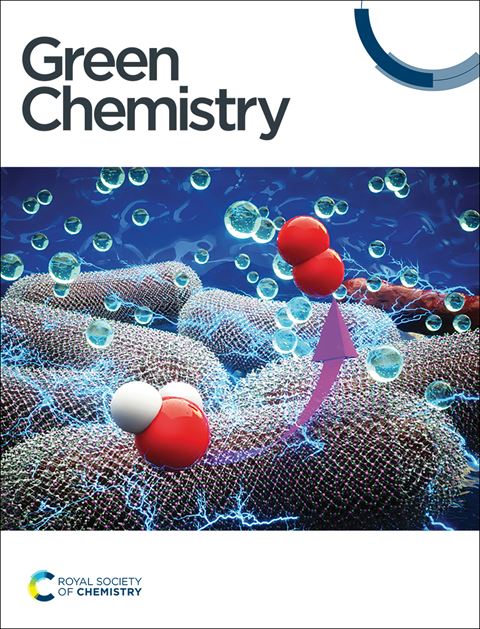Catalytic alkaline hydrolysis of PET and BPA-PC waste in minutes at atmospheric pressure without microwaves or organic solvents†
IF 9.3
1区 化学
Q1 CHEMISTRY, MULTIDISCIPLINARY
引用次数: 0
Abstract
Rapid hydrolysis of poly(ethylene terephthalate) (PET) waste usually requires organic cosolvents, high pressures or microwave irradiation, which can increase the environmental impact/expense/operational complexity of an emerging enabling technology for more sustainable plastic recycling. Using a combination of solute-derived boiling point elevation and phase transfer catalysis, operationally facile, rapid alkaline hydrolysis of PET and poly(bisphenol A carbonate) (BPA-PC) waste – from beverage bottles/textiles and compact discs respectively – is achievable in minutes (≤5 min for PET and 20 min for BPA-PC) at atmospheric pressure without the need for either microwaves or organic cosolvents. Dimethyldialkylammonium halides were found to be optimal catalysts at low loadings. The rapid, one-pot catalytic hydrolysis of a waste stream of both plastics followed by ready isolation of the terephthalic acid and bis-phenol A monomer units in excellent yields (without decomposition) is possible by selective protonolysis.
常压下无微波或有机溶剂催化碱性水解PET和BPA-PC废物†
快速水解聚对苯二甲酸乙酯(PET)废弃物通常需要有机共溶剂、高压或微波辐射,这可能会增加环境影响/费用/操作复杂性,从而使新兴的塑料回收技术更具可持续性。使用溶质衍生沸点提升和相转移催化的组合,操作简便,PET和聚双酚a碳酸酯(BPA-PC)废物的快速碱性水解-分别来自饮料瓶/纺织品和光盘-可在几分钟内(PET≤5分钟,BPA-PC≤20分钟)在常压下实现,无需微波或有机共溶剂。在低负荷条件下,二甲基二烷基卤化铵是最佳催化剂。通过选择性质子解,可以对这两种塑料的废液进行快速、一锅催化水解,然后以极好的产量(不分解)分离对苯二甲酸和双酚a单体单元。
本文章由计算机程序翻译,如有差异,请以英文原文为准。
求助全文
约1分钟内获得全文
求助全文
来源期刊

Green Chemistry
化学-化学综合
CiteScore
16.10
自引率
7.10%
发文量
677
审稿时长
1.4 months
期刊介绍:
Green Chemistry is a journal that provides a unique forum for the publication of innovative research on the development of alternative green and sustainable technologies. The scope of Green Chemistry is based on the definition proposed by Anastas and Warner (Green Chemistry: Theory and Practice, P T Anastas and J C Warner, Oxford University Press, Oxford, 1998), which defines green chemistry as the utilisation of a set of principles that reduces or eliminates the use or generation of hazardous substances in the design, manufacture and application of chemical products. Green Chemistry aims to reduce the environmental impact of the chemical enterprise by developing a technology base that is inherently non-toxic to living things and the environment. The journal welcomes submissions on all aspects of research relating to this endeavor and publishes original and significant cutting-edge research that is likely to be of wide general appeal. For a work to be published, it must present a significant advance in green chemistry, including a comparison with existing methods and a demonstration of advantages over those methods.
 求助内容:
求助内容: 应助结果提醒方式:
应助结果提醒方式:


